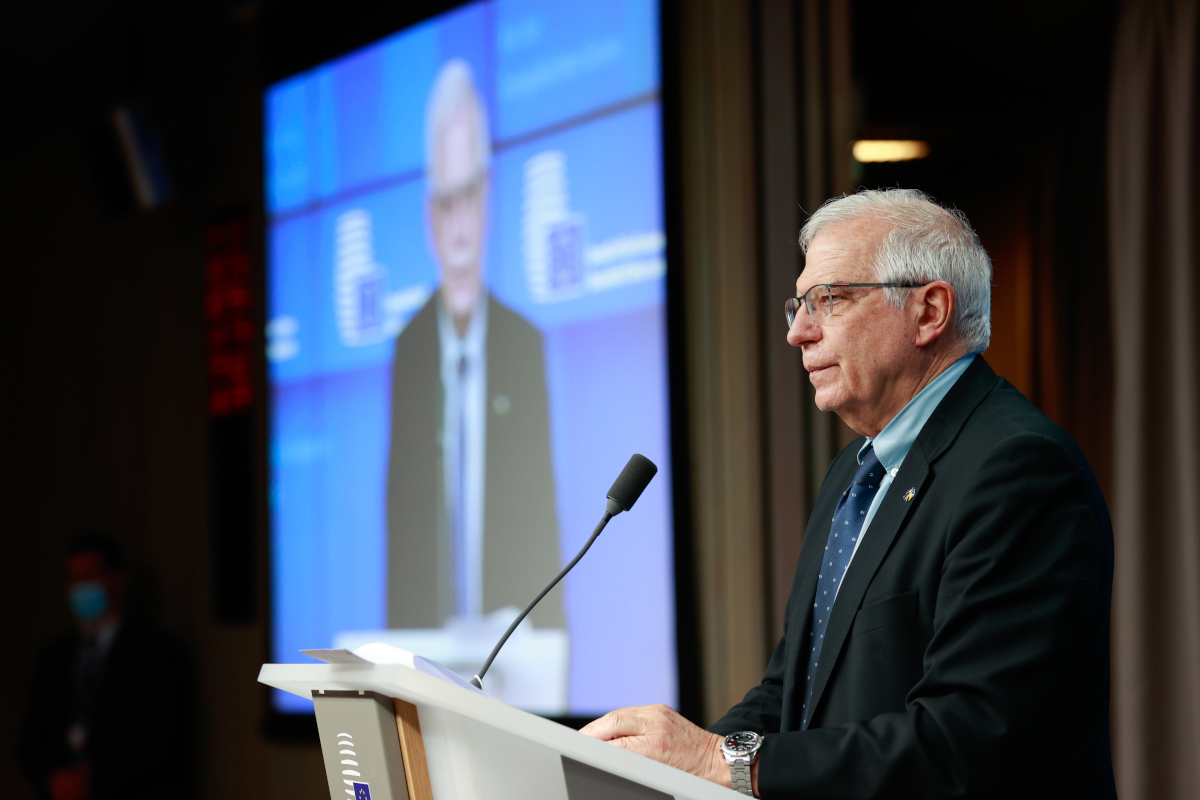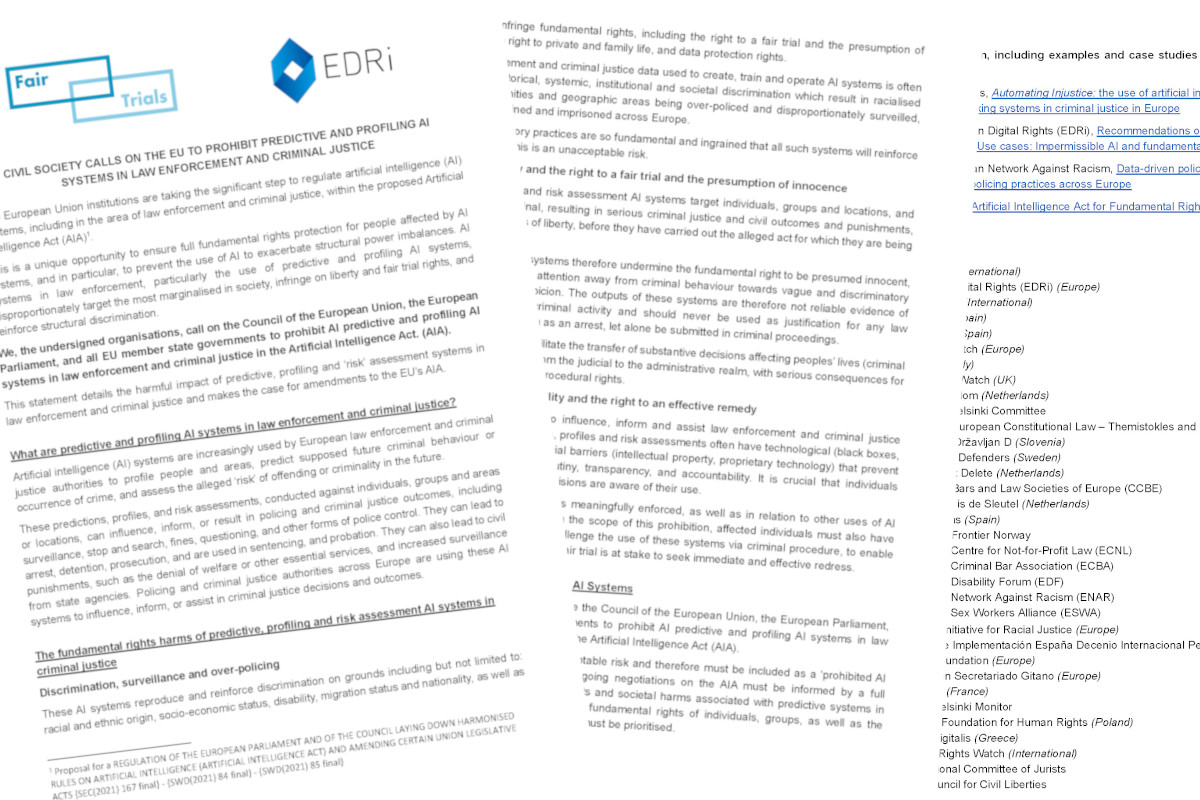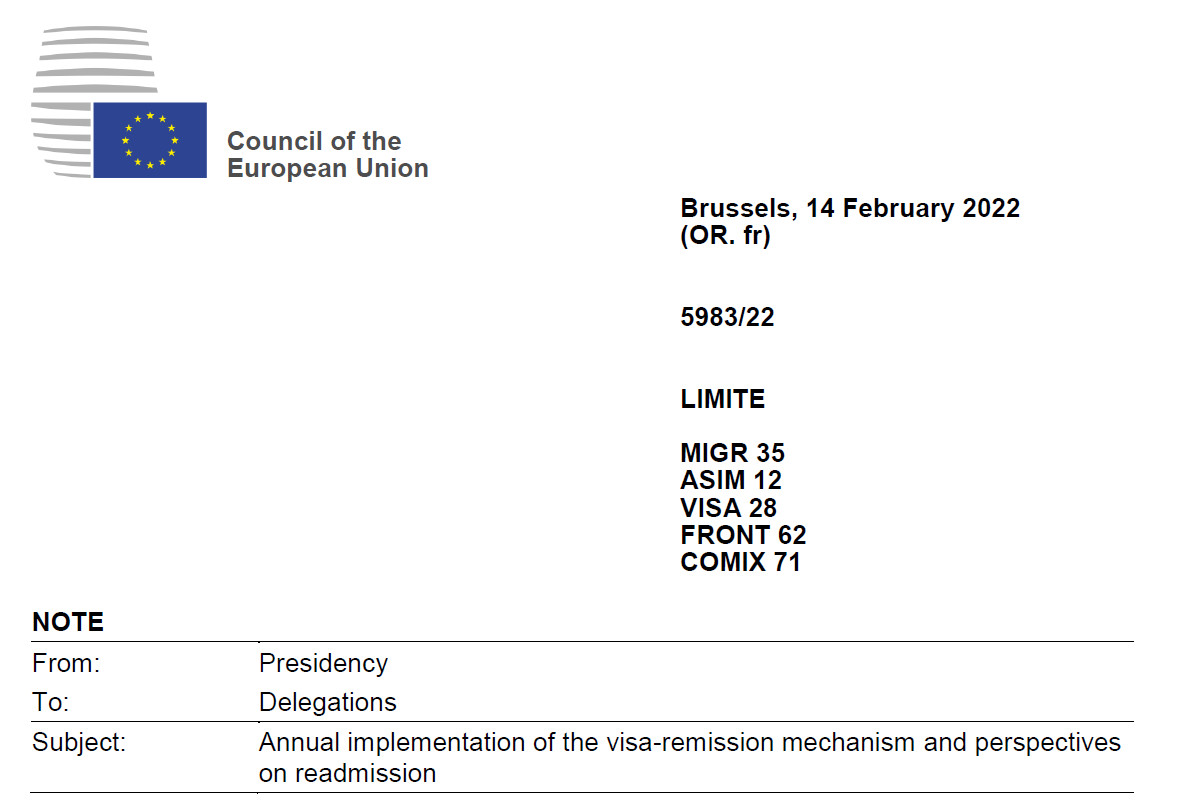EU: Concept Note on providing arms to Ukraine
Topic
Country/Region
16 March 2022
"Guns, ammunition, rockets and fuel are on their way to your troops," announced the President of the European Council, Charles Michel, in an "address to the Ukranian people" on Sunday 27 February. The address came after the European Council agreed to an "assistance measure" that will provide €500 million worth of weapons to Ukraine using funds from the new European Peace Facility. A Concept Note produced by the Council, publicly available here, outlines the possible pros and cons of that assistance.
Support our work: become a Friend of Statewatch from as little as £1/€1 per month.

According to a report in Politico Europe, Ursula von der Leyen, the President of the European Commission, referred to the decision as a "watershed moment," while EU foreign policy chief Josep Borrell said: "Another taboo has fallen... The taboo that the EU was not providing arms in a war, yes we are doing it … This war requires our engagement in order to support the Ukrainian army."
The Concept Note (pdf) remarks that while the EU provided material for medical needs, engineering, mobility and logistics and "cyber defence" in 2021, Russia's invasion of Ukraine on 24 February means "the needs of the UAF [Ukranian Armed Forces] have risen dramatically." The Ukranian government thus requested assistance from the EU, with the EU proposal consisting of:
"arms and automatic weapons with a calibre of 12.7 mm or less or smooth-bore weapons with a calibre of less than 20 mm (ML 1 on the EU Common Military List);
guns of higher calibre, howitzers, cannons, mortars, anti-tank weapons, projectile launchers, etc. (ML 2 on the EU Common Military List);
ammunition for the abovementioned categories of equipment (ML 3 on the EU Common Military List);
air defence and anti-missile systems (ML 4 on the EU Common Military List)."
The Note goes on to consider the possible pros and cons of providing arms to the Ukranian military, underlining that:
"On 24 February 2022, the Russian Federation launched a large-scale military aggression against Ukraine, in violation of international law and the UN Charter, and the commitments entered into by the Russian Federation in the Helsinki Final Act, the Charter of Paris as well as its commitments under the Budapest Memorandum. The OSCE Special Monitoring Mission to Ukraine (SMM) has been evacuated. The Russian Federation has declared the Minsk Agreements [which sought a peaceful solution to the situation in Donetsk and Lugansk] dead."
It continues:
"There are various categories of risks linked to the proposed assistance measure:
(a) Risks linked to the effects of the assistance:
1. Provision of equipment reinforces the cycle of violence and conflict;
2. Supported units commit or are accused of violations of IHRL/IHL;
3. The equipment provided ends up in the wrong hands;
4. The Russian Federation responds to the provision of equipment in a way inimical to the interests of the EU.
(b) Potential benefits associated with the provision of equipment:
1. The provided equipment responds to the operational needs of the UAF, responding to an external aggression;
2. The UAF are better positioned to ensure the protection of civilians on the territory of Ukraine.
3. The UA government is in a better position to maintain its internationally recognized sovereignty over its territory."
The Note then goes on to outline a number of conditions and safeguards that must be met to try to diminish the risks outlined above, such as explicit requests to the units armed by the EU to comply with international humanitarian law; the possibility of the European External Action Service conducting spot checks; and an obligation to ensure the weapons are not transferred outside of the UAF.
Documentation
- NOTE from: General Secretariat of the Council to: Delegations: Concept Note for an assistance measure under the European Peace Facility for the supply to the Ukrainian Armed Forces of military equipment, and platforms, designed to deliver lethal force (Council doc. 6661/22, LIMITE, 27 February 2022, pdf)
Further reading
- European Council, 27 February 2022: Address to the Ukrainian people by European Council President Charles Michel
- Politico Europe, 27 February 2022: EU agrees to give €500M in arms, aid to Ukrainian military in ‘watershed’ move
- The Guardian, 19 May 2021: Hard power: Europe’s military drift causes alarm
Image: European Council
Our work is only possible with your support.
Become a Friend of Statewatch from as little as £1/€1 per month.
Spotted an error? If you've spotted a problem with this page, just click once to let us know.

